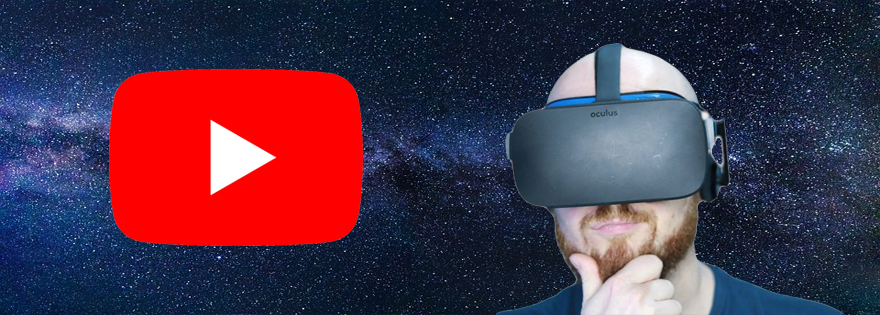As we think about investing in the future of work, retail, communication, transportation, play, and experience, it’s important to discuss one of the most impactful and often underrated players in the entertainment industry, YouTube. Almost 2 billion people log on each month. OTT platforms like Netflix and Hulu are often considered the perpetrators of this decade’s cord-cutting trend, but we can’t underestimate the role YouTube has played. Over the next decade, we expect the trend to continue even more drastically as the younger generation, who are growing up watching their favorite YouTubers for hours every single day, matures.
YouTubers are increasingly becoming the modern-day celebrities that kids want to see on the street. A-list actors like Will Smith, Jack Black, and The Rock are starting their own YouTube channels because they know that’s where the future of relevancy lies.
But who are all these regular people like us starting YouTube channels that capture the attention and wallets of millions around the world? In order to better understand what it’s like to have a full-time job making YouTube videos, we spoke with one of the leading YouTubers creating virtual reality (VR) content, Mike Cussell, founder of the Virtual Reality Oasis YouTube channel.
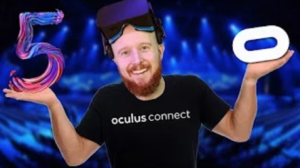
The Man Behind VR Oasis
Like many YouTubers, Mike had a full-time job before he started making videos – in his case, it was 13 years of emergency calls, drug raids, and technical service in the United Kingdom police force. Coming from a family of creatives, Mike always had the itch for a creative outlet, so in his spare time he started a YouTube channel making video guides for virtual reality hardware that was often a challenge to get working properly (an issue that will hopefully be solved with the Spring 2019 release of the Oculus Quest). There were two reasons why Mike started making videos about VR. First, he was enthralled by the power of VR’s ability to immerse him in a game, and second, there was a void in the market that he could fill since the community had many questions but not many people with answers.
After a day at his bleak job that showed the very worst of humanity, Mike would come home to the excitement and newness of a future with VR then share his enthusiasm with the world through his videos. Starting the channel, Mike had no plans to make it big until he made a video showing the alternate endings to popular VR game, Duck Season, that went viral.
Mike had about 5k subscribers at the time, but the Duck Season video with over one million views was his first big paycheck from YouTube. Soon thereafter, Mike knew he had a rare opportunity on his hands. After talking with his family, friends, and wife, Mike decided to quit his job and start working full-time on his Virtual Reality Oasis YouTube channel.

What It Takes to Be a Successful YouTuber
Many people who watch YouTube videos religiously have always wanted or tried to start a successful channel. Problem is, there are only so many eyeballs to go around, so competition for subscribers is fierce. Videos are at the mercy of YouTube’s ever-changing and controversial recommendation algorithm that has the goal to increase time spent on the platform which leads to higher advertisement revenue.
The first 1,000 subscribers for a channel are often harder to earn than the next 50,000. Finding ways to develop an initial following before the network effect takes hold are extremely challenging, and it’s hard to stay motivated when you spend hours of effort on a video that gets barely any views. We asked Mike how he was able to gain his first 1,000 subscribers and sustain that success as he works his way towards 100,000. Here’s what he had to say:
- Have a clear value proposition for potential subscribers driven by consistent, topical content.
- Having a schedule, such as videos every Monday, Wednesday, and Friday keeps you on target and gives your audience expectations for future content to be excited for. The best videos are saved for Fridays.
- After publishing a video that you put a ton of effort into doesn’t perform well, you have to be 100% focused on making the next video even better.
- Offer something different. In Mike’s case, few channels were putting out informative VR videos.
- YouTube’s algorithm won’t help you grow much, so self-promotion is absolutely critical. You have to find existing online communities of your target audience and contribute meaningfully to those Facebook groups, Reddit forums, and other social media conversations.
- Eye-catching video thumbnails and titles are critical to hook a viewer.
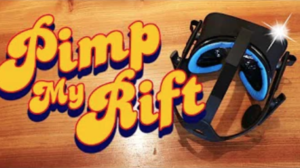
What It’s Like to Be a Full-Time YouTuber
Making YouTube videos for a living seems like the dream job. You can be your own boss, set your own schedule, and get paid to play video games every day. However, we usually only see the highlight reel of a YouTuber’s life in vlogs where all the boring parts are left out. We asked Mike to describe what his life is like now that he has gone full-time on YouTube.
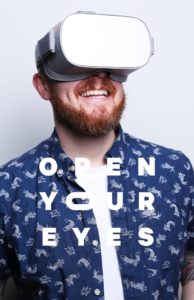
Compared to his time in the police, Mike works more hours per day, works weekends, wakes up early and goes to bed late to compensate for time zones differences when collaborating with other creators and companies headquartered around the world. Each video Mike publishes requires about 12 hours of effort from start to finish. Here is the breakdown of that time spent:
- Researching – 20%
- Planning – 20%
- Recording – 10%
- Editing – 30%
- Promotion – 20%
On a good day, Mike has a clear vision for a video, most of which are planned two weeks in advance, and executes on that vision without too many speed bumps. Other days, editing can be a real chore which is why many top creators hire editors.
Going full-time also requires a financial risk given it often takes years of hard work to make more money than at a traditional job. Mike made sure to have a safety net in place before taking the full-time plunge by having a year’s worth of savings in place. He could have always gone back to the police if it didn’t work out, but the upside of pay, a chance to travel the world, and being able to do what he loved every day made the risk a no-brainer.
YouTube as a Business
The economics of YouTube go far beyond how many views and subsequent advertisement revenue you collect. For many YouTubers, especially ones that have a large following surrounding a monetizable product, there are many other opportunities available as an influencer. Mike, for example, has a channel where his audience is interested in virtual reality hardware, software, and really anything VR related. As expected, virtual reality companies are reaching out constantly to have Mike review and/or promote their hardware or virtual experience.

Another key revenue stream comes when Mike reviews a product in a video then adds an affiliate link in the video’s description box. An affiliate link earns its host a commission (1-5%) of a sale if the purchase is made through that link. Mike gets about 5-6 emails per day from VR companies wanting exposure but has to turn down many more brand deals than he can take. Mike’s revenue stream breaks down as follows:
- Adsense (video ads) – 40%
- Affiliate Links – 45%
- Brand deals – 15%
Companies often send Mike free products, but he also reinvests earnings back into the channel in the form of buying the latest headsets and accessories. He can justify these expenses knowing they will pay for themselves many times over in content for his channel.
Beyond YouTube
Becoming a popular online personality through YouTube can open up any doors for other business opportunities as well.
YouTube channels make a killing off selling merchandise. Now that Mike has developed his brand in the virtual reality community, VR merch is in the works. You might be thinking, how can one person keep up with all of this as their business grows? The answer is hiring employees. Once a YouTube channel reaches 400-500k subscribers, it is pretty common to hire a manager or start building out a team working on content and/or outside initiatives.
Last year, Mike along with three other VR YouTubers launched a podcast called FReality all about the latest news in virtual reality, augmented reality, and mixed reality. While the podcast is seen as a long-term investment, initiatives like this open up Mike’s ability to do consulting work in the industry.

The State of VR
One of the things that interested us in Mike’s channel specifically was the upside and downside of creating content for a currently small VR audience that has the potential to grow massively over the next 5+ years.
Given the limited number of head mounted display owners, there aren’t too many VR content creators, let alone full-time VR channels. The bright side of this situation is the community is tight-knit among content creators, their fans, and companies, both large and small.
Mike was flown out by Facebook to the Oculus Connect 5 conference and has great relationships with many VR startups, including Cybershoes who sent Mike out to Gamescom to try out their shoes that allow for more natural movements in a virtual space. He has also traveled to the Netherlands to create content with fellow full-time VR YouTuber, Nathie.
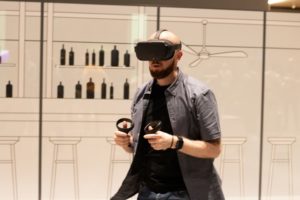
Mike stressed his commitment to and belief in VR as the natural next step in immersive gaming experiences. It’s less a matter of if, but when VR will takeoff. As we said in our Is VR Dead or Just Getting Started note, Mike is bullish on the Oculus Quest’s ability to bring VR closer to the mainstream in 2019.
A channel like Mike’s is positioned well to grow along with the VR market over time. Our best guess is the VR market and Mike’s career as a VR YouTuber will be trending upwards for the foreseeable future as hardware becomes accessible and content becomes increasingly compelling.
Rapid Fire Questions
To conclude, we wanted to ask Mike a few rapid fire questions:
- Oculus or Vive?
- Oculus
- Does 3DOF have a future in VR?
- Yes, for media consumption, social apps, and education. (We agree.)
- What will be VR’s killer app
- Social worlds. (We again agree and wrote all about it in our Metaverse Explained Series)
- Best VR games out now
- PC – Beat Saber
- Mobile – Virtual Virtual Reality
- Most underrated game out now
- Most anticipated 2019 game
- Favorite YouTuber
- 2019 Goals
- Go to as many VR events as possible.
- Reach 100k subscribers.
You can get in contact with Mike from Virtual Reality Oasis here: contact@virtualrealityoasis.com
Disclaimer: We actively write about the themes in which we invest or may invest: virtual reality, augmented reality, artificial intelligence, and robotics. From time to time, we may write about companies that are in our portfolio. As managers of the portfolio, we may earn carried interest, management fees or other compensation from such portfolio. Content on this site including opinions on specific themes in technology, market estimates, and estimates and commentary regarding publicly traded or private companies is not intended for use in making any investment decisions and provided solely for informational purposes. We hold no obligation to update any of our projections and the content on this site should not be relied upon. We express no warranties about any estimates or opinions we make.
